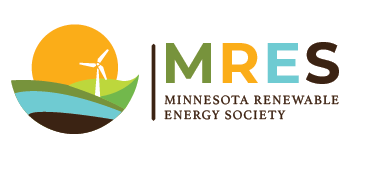Solar installers brace for new year challenges
December 13, 2021
A perfect storm is brewing. Even if you as an installer do everything right in the interconnection process, you may find yourself unable to build until late summer or fall, even if you start MN DIP with Xcel Energy in January.
Interconnection -- The Solar Rewards Program ran out of money less than halfway through 2021. Even though Xcel was able to reallocate unused money from previous years, there is good reason to believe a wave of residential applications will crash upon the already overworked Solar Program staff like a tsunami come January 3rd. Xcel has publicly stated they will be able to process up to 75 applications a week in the sequence they are received. Xcel processes almost 2000 solar interconnection applications a year – do the math. The same staff processing Solar Rewards also needs to manage applications over 40kW. If you are a commercial developer ready to submit documents to Xcel but wait until January, you risk months of delay before you even start.
Procurement – This year, countless projects were delayed by weeks or months awaiting items that, pre-Covid, were stock items such as meter sockets, breakers, and panel boards. The bigger your project, the more likely you will need custom (i.e. expensive) switchgear components. Committing precious operating capital to pre-buy materials you wouldn’t be able to use on other projects should the Interconnection Application get hung up in sequential or supplemental review is a non-starter. Get that IA in this year if you can!
Incentives – After December 31, 2022 the 26% Investment Tax Credit ramps down to 22%. In addition, the 100% bonus depreciation for capital expenditures (solar, too) available to businesses decreases to 80% come January 1, 2023. Solar Rewards payments per kWh for 10 years, will be reduced $0.03 in 2022 with no guarantee they will continue. Savvy clients who have been doing their solar research while making money in the stock market and taking their cryptocurrency profits have no more reasons to sit on the fence. January 1, 2022 is a big day!
Labor – In Minnesota, as you know, installing just about anything solar is considered electrical work and must be directly supervised at a ratio of no less than 1 licensed electrician to 2 apprentices. In the last year, record numbers of experienced workers (Baby Boomers) including electricians decided to retire, many early due to Covid uncertainty. If you think finding quality, experienced solar workers was difficult/expensive this year, try getting a project done at the end of 2022 when the best craftspeople will have been working all year for the competition!
While all this may sound like reason for despair, ultimately this pressure is driven by continuing strong demand for renewable energy and is ample reason to remain optimistic for the industry. A few strategies that may help you survive – and thrive – another year on the solar coaster.
Plan -- The best thing you can do for your construction schedule of course is to get most of your interconnection applications for next year in now or as early as possible in 2022.
Inventory -- While it may not be possible for all installers and, admittedly, could contribute to supply chain scarcity, buy a few components ahead of time you know you will use in most installations – better to scramble for the last 10% than be scratching your head in front of a client at year’s end trying to explain why 90% of what you thought were common parts aren’t arriving until January 2023 when the tax equity component of their investment is much less.
Advocate -- Don’t forget to educate your clients, supporting their efforts to pressure the PUC and Xcel to identify and alleviate bottlenecks in MN DIP.
People – No matter what strategies you adopt, recognize you need your experienced solar workers now and in the near future more than they need you. Invest in your employees to keep them around and engaged during the winter down time. Train them in design or project management, get them NABCEP certified, have them manage interconnection applications, send them to trade shows if Covid allows, improve their compensation, understand and support their career goals, and most importantly keep them safe on the job site.
Article by Peter Reese
